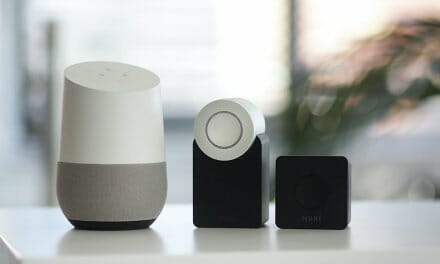
Predictive Dialing Software for Account Management in the Insurance Industry

There have been several developments as a result of corporate technology usage. Companies now find it a time-consuming process to dial phone numbers manually, some of which can result in rejected or missed calls.
Today, many businesses are shifting to use predictive dialing tools to automate their outbound calling processes. Predictive dialers optimize the process by reaching out to potential customers. The system uses algorithms for calls to reduce waiting periods. It also maximizes conversations.
If you work in the insurance industry, then this article is for you. Keep reading to learn how to leverage it to your advantage in your operations.
What Is A Predictive Dialer?
Predictive dialer is an automated dialing system that initiates calls before the availability of agents. It aims to maximize the number of leads contacted. Its primary goal is to enhance the efficiency of agents by minimizing idle time.
The system proceeds to the next lead in the event of an unanswered call. Answered calls are directed to the next available agent. This approach ensures that agents have more productive talk time, leading to increased productivity.
Predictive dialers have helped several industries maintain their competitive advantage. This method is present within contact centers which helps in enhancing efficiency and cutting periods of inactivity.
Predictive dialing assists outbound dialers in making calls to clients. The outbound dialer determines which caller is most likely to answer the phone. Usually, account managers in the insurance industry work with clients to build long-term relationships, and communicate with insurance providers.
Predictive dialers help insurance agents save time and money. Calls are only routed to agents after detecting busy signals or voicemails.
What is an Inbound and Outbound Predictive Dialer System?
-
Inbound Predictive Dialer System
Inbound dialer systems are designed to receive and manage incoming calls from customers to express their interest and to make requests. The agents may receive calls from customers seeking help with their concerns. Only then agents will address the inquiry under the established policies of the company.
Companies consider inbound dialer systems as the main means of customer interaction. This type of dialer systems help ensure a positive customer experience.
-
Outbound Predictive Dialer System
An outbound dialer system allows you to contact thousands of individuals. It helps identify those who are most likely inclined to buy your service or product.
The outbound dialer systems contact customers whose data is in the company’s database. This assists agents in making calls and informing customers about new services and advancements. Agents also assist clients in upgrading their services.
In the outbound dialing system, you reach out to customers with the intention of providing assistance. Unlike inbound calls, this type of dialing system does not wait for customers to start contact. This can make customers feel valued and supported.
How Does a Predictive Dialer Work?
Finding the right predictive dialing software with numerous dialing modes is useful for outbound use cases. Hence, it can benefit an insurance industry’s customer service significantly. The predictive dialing software can be employed to enhance the quantity of calls. It also helps to maintain a smooth customer experience as they are equipped with algorithms. So, how does a predictive dialer work?
-
It Starts by Dialing a Number From the List
The software for dialing initiates by calling a number from the given list. It uses various statistics such as:
- The average time taken to handle a call
- Time spent after a call
- The percentage of calls answered
- Rate of abandoned calls.
This is to estimate the number of entries that each operator should dial to optimize their workload. The dialer screens out busy signals, answering machines, and calls that go unanswered. The system then links agents to live callers. It also manages failed calling attempts based on predetermined redialing intervals.
-
It Determines How Long a Call Will Last
Calculating call time can help you work more. The term “call time” in contact centers refers to the duration of a caller’s conversation with an agent, which usually includes talk time and hold time initiated by the agent.
It is based on:
- The performance
- The nature of the campaign
- Client preferences.
This aids in converting leads into consumers who use your insurance services. The predictive dialer software utilizes a “pacing algorithm”. This is to estimate the typical duration of a phone call and the average number of attempts to establish a connection. It adjusts the dialing speed based on these forecasts.
-
It Examines Various Call Patterns
Examining call patterns assures that each agent is working to generate sales and does not need human interruption. The agent cannot choose which calls to answer, hence guarantees impartiality.
When a call is not answered, the predictive dialer proceeds to the next number on a predetermined list. The dialer can make many calls resulting in a smooth flow of live calls and minimal downtime.
The dialer can analyze unsuccessful calls and notify agents when your client needs a call back. By monitoring call metrics, predictive dialers simplify the process of running many campaigns at once.
Features of Predictive Dialer Software for Insurance Industries
Managers and agents use different kinds of calling software services. These call tools aid in boosting call agents’ success and increase their effectiveness. Their features can be useful for the company based on their needs or choices. The feature include:
-
Conference Call
Agents can join a call that is already in progress using predictive dialers as a third party. Here, a call to the client is being placed to a conference call. Once the first call connects, select that agent as the next in line.
By pressing the call conferencing button, you can connect both calls at once. There are no additional charges associated with this service.
-
Pacing Ratio
The pacing ratio is a crucial component of predictive dialers. This refers to the number of agents available and the quantity of calls executed by each agent. It establishes an upper threshold on the number of calls assigned to an individual agent.
-
Omnichannel Integration
Omnichannel integration is important in establishing a connection with customers through their preferred channels. It recommends selecting a predictive dialer to enhance cross-channel campaigns.
-
Customer Relationship Management (CRM)
Predictive dialers collect an amount of data on potential customers. The CRM enables the agent to retrieve this data. This helps enhance a deeper understanding of the client.
Additionally, the agent can use the CRM system to get more practical observations about the client. This facilitates the establishment of a dependable target audience.
-
Skill-Based Routing
It is important that calls are being directed to agents. But, the implementation of skill-based routing brings greater flexibility. By following a criteria, this routing assures that the agent qualifies.
How to Choose the Best Predictive Dialer Software
You have to be aware of the various predictive dialer options available in the market and have basic knowledge of their functionalities.
It is important to remember that not all outbound dialer software is considered equal. Thus, you need to consider critical capabilities and features to achieve optimal results.
Here’s a guide to choosing the right predictive dialer software.
-
Real Time Data Analytics
It is imperative to find an auto dialer that can track the performance of leads through automated reports. This provides information on the number of calls made and their dispositions.
-
Compliance Support
It is crucial to ensure that the predictive dialer used is compliant with relevant rules. This is important in regulated industries. The system should manage to route leads to agents with the appropriate licensure.
Thus, it’s advisable to seek out a predictive dialer that offers feature integrations. This ensures agents remain up-to-date on rules, and maintain a consistent message.
-
Technical Support
Ensure that the prospective provider offers technical support during critical business hours. Investigate the availability of resources in providing essential support.
-
Scalability
The best predictive dialer goes beyond your business needs. You must consider the potential for expansion. It must have a system that helps agents in bolstering operations.
-
Third-Party Integrations
Finding an autodialer system does not mean abandoning the entire sales stack. You have to explore third-party integrations and check your tools used in management, tracking, and optimization.
FAQs
-
What Is the Main Benefit of Predictive Dialer Software?
The predictive dialer software offers a significant advantage in establishing communication with clients. It facilitates brand expansion, product marketing, and sales revenue growth. The call tool simplifies work for your agents, thus improving effectiveness and productivity.
-
How Does Predictive Dialer System Boost Call Volumes?
Companies can expand their outreach within a shorter time frame. This is possible by employing a strategy of dialing numbers from a database. It also includes initiating many calls for each individual contact.
-
What is Predictive About Predictive Dialers?
As the frequency of calls increases, the dialer’s predictive capabilities improve. It determines the optimal timing and quantity of numbers to dial. The dialer enhances the likelihood of establishing a live connection.
Conclusion
A predictive dialer helps boost productivity and efficiency at your company. In account management, this is ideal if you want to update your outbound insurance operations. The call system can also help lengthen the time your agents spend interacting with leads.
It is important to know that predictive dialers have more than their components. The best predictive dialing software should have a combination of efficacy, accuracy, and flexibility.
If you intend to employ a dialing software for long term use, you should define your company’s needs first. Although technology is crucial in the sales process of outbound contact centers, it is still essential to have the appropriate call tool to ensure long-term growth.
























